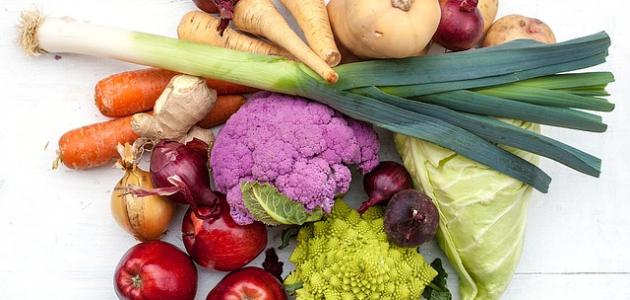Pregnancy diabetes
Gestational diabetes is one of the diseases that may appear in pregnant women without having previously had it. That is, before she becomes pregnant, as the blood sugar level rises during pregnancy and usually disappears after birth. This diabetes can be contracted at all stages of pregnancy, but it usually appears during the second or third trimester of pregnancy, and occurs as a result of the body’s inability to produce sufficient quantities to increase its need. It is the hormone insulin that helps control blood sugar levels, and its infection may cause problems for the pregnant woman and the child during pregnancy and after birth. On the other hand, if it is detected early, it can be controlled and its risks reduced.
Although the exact cause of gestational diabetes is still unknown, it is likely related to hormones that are produced in large quantities during pregnancy and help maintain the pregnancy and affect the placenta. As increasing its quantity over time may increase insulin resistance, gestational diabetes can be controlled most of the time by eating healthy foods and exercising regularly, but in some cases a woman with it must take insulin, and must undergo a diabetes test after giving birth. For a period of 6-12 weeks, then every 1-3 years, and although it goes away shortly after childbirth for most women, it may continue and in this case it is called type XNUMX diabetes.
Read also:What is the importance of breakfast during the dieting period?A special diet for patients with gestational diabetes
Maintaining a balanced diet is an essential part of ensuring a healthy pregnancy and controlling gestational diabetes. The doctor can help determine the best types of foods and appropriate meals to maintain the health of the pregnant woman. Women with gestational diabetes should pay attention to the amount of carbohydrates, protein, and fats, while organizing consumption schedules. Food to control their blood sugar levels, such as eating every two hours.
Nutritional elements for gestational diabetes patients
The following are the basic elements of a pregnant mother’s diet:
- carbohydrates: Carbohydrates are an important part of the diet for a woman with gestational diabetes, and it is preferable not to eat a large amount of them in one meal. On the other hand, they should be distributed throughout the day, with a small amount eaten with each meal. Carbohydrates can be obtained from grains, milk and its derivatives, and fruits. And vegetables. To control the amounts of carbohydrates consumed, many methods can be used, including the following:
- Start counting carbohydrates: One serving is equivalent to 15 grams, and this helps calculate the number of grams of carbohydrates consumed in each meal to ensure staying within the plan specified by the specialist or doctor.
- Eating foods with a low glycemic index: Foods with a low glycemic index are important in the diet for patients with gestational diabetes. They are foods that raise the blood sugar level slowly and are classified as a glycemic index of 55 or less. This is a good way to control diabetes. Blood sugar levels in women with gestational diabetes, including non-starchy vegetables and some starchy vegetables, such as; Peas, carrots, and some types of fruits, such as; Apples, oranges, grapefruit, peaches, and pears, in addition to beans, lentils, and chickpeas.
- Fats: It is recommended to eat healthy fats, such as; Canola oil, olive oil, in addition to avocados, unsalted nuts, and polyunsaturated fats (in English: Polyunsaturated oils), and limit the intake of saturated fats by choosing lean meat, skinless chicken, and low-fat dairy derivatives, and avoiding ready-made meals and processed foods. .
- Proteins: Protein can help you feel full during the day and improve blood sugar levels. It should be noted that a pregnant woman’s protein needs increase during the last three months of pregnancy, and include foods containing protein. Fat-free meat, eggs, fish, skinless chicken, and low-fat cheeses. Legumes, yogurt, and milk are sources of protein and also contain an amount of carbohydrates. The following points explain the pregnant woman’s protein ration needs: Noting that one serving is equivalent to: 28 grams of lean meat, chicken or fish, one egg, 1/4 cup of cooked dried beans, approximately 14 grams, and a tablespoon of peanut butter:
- 5.5 servings for pregnant women in the first three months.
- 6.5 servings for pregnant women in the last six months.
- 6.5 servings for breastfeeding mothers.
Example of a one-day diet for gestational diabetes
It is recommended that pregnant women with gestational diabetes eat at least 3 meals, ranging in size from small to medium, in addition to 2-4 snacks daily. It is worth noting that there is no single diet suitable for everyone, and a nutritionist must be consulted to develop the appropriate diet. As it is taken into account: weight, lifestyle, medications consumed, and other health problems that the pregnant woman suffers from. Below is an example of the general form of diet that a doctor or nutritionist can give to those who suffer from gestational diabetes, knowing that this The system does not indicate the number of calories that a pregnant woman needs, and she must consult a nutritionist to know her exact needs:
Read also:Foods that reduce stress- Breakfast: It contains two servings of carbohydrates, equivalent to 30 grams. It includes one slice of brown toast, which is equivalent to a serving of carbohydrates, a cup of skim milk, which is equivalent to a serving of other carbohydrates, and an egg.
- Snack: One serving of carbohydrates contains the equivalent of 15 grams. It includes 4-6 flakes of whole wheat flour, equivalent to one serving of carbohydrates, and the equivalent of 28 grams of cheddar cheese.
- lunch: It contains 3 servings of carbohydrates, equivalent to 45 grams. It includes a medium-sized boiled potato, equivalent to two servings of carbohydrates, and a cup of skim milk equivalent to one serving of carbohydrates, in addition to 113 grams of skinless chicken, and a cup of broccoli salad, with 1-2 tablespoons. Great salad dressing.
- Snack: It contains two servings of carbohydrates, equivalent to 30 grams. It includes 3 cups of popcorn, which is equivalent to one carbohydrate serving, and a small apple, which is equivalent to one carbohydrate serving, in addition to 2 tablespoons of peanut butter.
- Dinner: It contains 3 servings of carbohydrates, equivalent to 45 grams. It includes two slices of wholemeal bread, equivalent to two servings of carbohydrates, and a cup of skim milk, equivalent to one serving of carbohydrates, in addition to the equivalent of 85 grams of turkey meat, one cup of vegetables, and a serving of... Carbohydrates are equivalent to a cup of berries.
- Snack: It contains 1-2 servings of carbohydrates, ranging between 15-30 grams. It includes half a large banana or a small banana, which is equivalent to one serving of carbohydrates, and 1/2 cup of fat-free Greek yogurt, which is equivalent to 1/2 serving of carbohydrates, in addition to 2 tablespoons of Nuts.
- We reiterate here that this diet is just an example of what a nutritionist or health care provider responsible for a patient with gestational diabetes can give. Every woman’s needs are different, and there is no single diet suitable for all people.
Foods that can be reduced or avoided for gestational diabetes patients
Among the foods that should be limited, we mention the following:
Read also:The easiest recipe to gain weight in a week- Foods high in trans and saturated fats, including fried and other foods.
- Foods high in salt or sodium.
- sweets; Such as ice cream, candy, and baked goods.
- Drinks containing added sugars, such as; Juices, soft drinks, energy drinks, and it is preferable to consume water instead, as well as using a sugar substitute for both coffee and tea.
Tips to avoid gestational diabetes
Reducing weight
Excess weight before pregnancy affects the risk of developing gestational diabetes, and therefore losing excess weight before pregnancy contributes to maintaining a healthy pregnancy, as weight increases during pregnancy in a natural and healthy way, but increasing it in a large amount and quickly can increase the risk of developing gestational diabetes, and it is advised Consult a doctor to ensure the normal amount of weight gain.
exercise
Exercising before and during pregnancy can help reduce the risk of gestational diabetes, and it is recommended to do 30 minutes of moderate-intensity exercise most days of the week.









